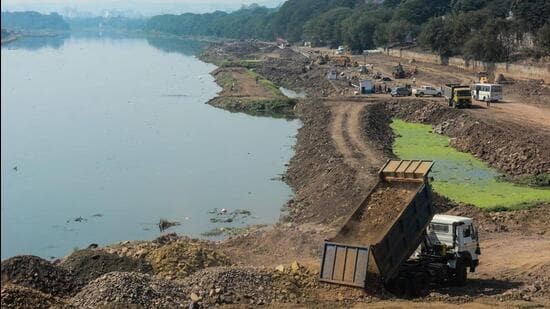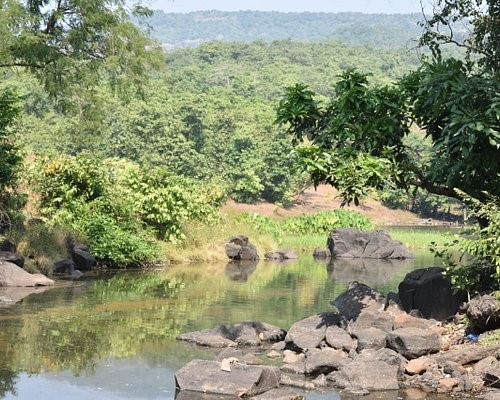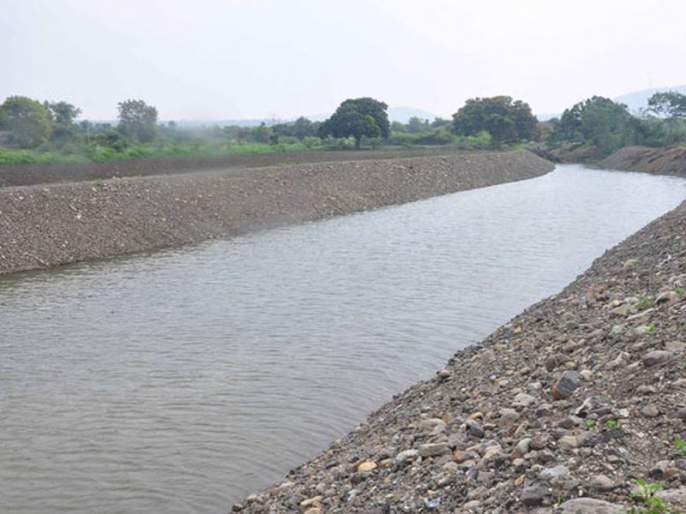The Jal Shakti Ministry’s first-ever nationwide water body census has identified a total of 97,062 water bodies in Maharashtra. Of them, 96,343 are in rural areas and only 719 in urban areas. Moreover, only 574 of these water bodies are said to be naturally occurring, while 96,488 are man-made

Pune, India – November 30, 2022: River front project work in progress, at Bund Garden, in Pune, India, on Wednesday, November 30, 2022. (Photo by Shankar Narayan/HT PHOTO) (Shankar Narayan/HT Photo)
Mumbai: The Jal Shakti Ministry’s first-ever nationwide water body census has identified a total of 97,062 water bodies in Maharashtra. Of them, 96,343 are in rural areas and only 719 in urban areas.
Moreover, only 574 of these water bodies are said to be naturally occurring, while 96,488 are man-made in the form of tanks, bunds, irrigation ponds, reservoirs and other water harvesting structures.
A staggering 92.7% of water bodies in the state are in the form of check dams, indicating much of rural Maharashtra’s reliance on water conservation schemes. This is more than any other state in the country, as per the census. Also, an overwhelming 77% of all water bodies in the state are used for groundwater recharge with three districts—Aurangabad, Nashik and Jalna—featuring in India’s top five districts with the maximum number of recharge structures. The other two are Anantapur in Andhra Pradesh and Sitapur in Uttar Pradesh.

Picture Credit – Tripadvisor
Most notably, the survey found that only 0.26% of water bodies in Maharashtra—251 to be specific are encroached upon, which is among the lowest in the country. By comparison, 6.24% of water bodies in Uttar Pradesh—15,301 were found to be encroached upon, the highest in the country. This census will enable water bodies in need of repair to avail help under the Centre’s Repair, Renovation and Restoration (RRR) of water bodies scheme.
The report defines a water body as “a structure where water from ice-melt, streams, springs, rain or drainage of water from residential or other areas is accumulated or water is stored by diversion from a stream, nala or river will also be treated as water body.” It should also be noted that oceans, rivers, lagoons, swimming pools and certain kinds of tanks (such as those used in factories and covered tanks used by individual households) were excluded from the census.
The survey, however, does not make any distinction between large water bodies and wetlands, though it identifies 12,191 water bodies larger than 5 hectares.

Picture Credit – Lokmat Times
HT had in October last year reported that Maharashtra has a total of 15,918 wetlands (larger than 2.5 hectares), of which only 108 are “naturally occurring”.
Vardhman Envirotech
India’s Passionate rainwater company
This article is published on: Hindustan Times, 26 April 2023.
We would like to spread this for the benefit of fellow Indians.
